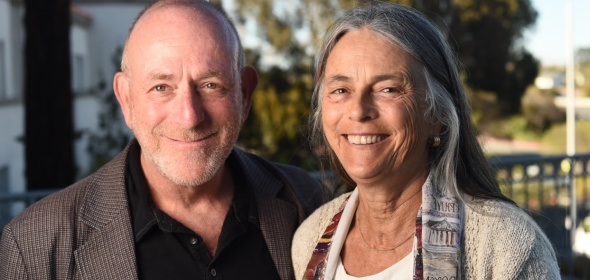Healthforce Center’s leadership development programs help leaders navigate change — and improve patient outcomes — through a process of individual transformation. Stanford University Professor Alan Glaseroff, MD, alum of one of our first leadership development cohorts, experienced that transformation during the California Health Care Foundation Health Care (CHCF) Leadership Program:
“I joined the program at a point where I was feeling frustrated with my inability to turn ideas into actions,” said Glaseroff, who, after participating in the first cohort of the CHCF leadership program, went on to found the Humboldt Diabetes Project. “I left with the skills to help lead my community towards a unique implementation of the chronic care model. I don't know where I would be today with the program.”
The Humboldt Diabetes Project has contributed to efforts that lowered the rate of deaths due to diabetes by about 29% in Humboldt County between 2003 and 2008, even though the California rate was unchanged over the same interval.
Recently, Glaseroff and Dr. Ann Lindsay, a husband-and-wife team, worked with Stanford University’s Arnold Milstein to establish a coordinated care clinic for “medically fragile” Stanford employees. By focusing on the challenges of high-need patients, the clinic was able to decrease the cost of health care in this group by 13% compared to the previous six months. A 59% decrease in ER visits and a 29% decrease in inpatient admissions mainly account for the drop.
Systemic Challenges Health Leaders Face
Under the predominant fee-for-service payment model, most primary care practices aim to see as many patients as possible in as little time as possible. However, Lindsay and Glaseroff implemented an alternative for their coordinated care clinic. To tackle the complex problems of high-need patients, Glaseroff and Lindsay started small with 253 individuals. Their clinic will grow in time, and their model is reproducible.
They analyzed the records of the biggest regular health care users among Stanford employees, looking for the most common conditions of the group. They then used those records to build a team to meet these most common needs. The final team included two physicians, a registered nurse, a physical therapist, a social worker, a pharmacist and four medical assistants trained as care coordinators. They divided providers’ salaries to develop a monthly per-patient cost for the clinic. The monthly amount allowed the practice to do all the work that was “unbillable” under fee-for-service, including phone calls, emails and video calls.
One patient who suffered from diabetes, high blood pressure, high cholesterol, sleep apnea and depression now has her health conditions under control and feels hope for the future because of the care she received. “I don’t want to sit and die anymore,” she was quoted saying in the Washington Monthly. “I want to live.”
Resilience is the Best Medicine for Change
Health leaders, like Glaseroff and Lindsay, require resilience to adapt to the many challenges they face. Whether on the front lines or in the back office, health leaders are dealing with the tyranny of not enough time, the dramas of urgent and non-urgent ailments, the complexities of human dynamics, and the dysfunction of our health care system on a daily basis. With resilience, they can pave the way toward a better health care system.
Learn more about Stanford’s Coordinated Clinic in Washington Monthly.
Sign up to get updates on health workforce research insights, trends and leadership opportunities.
